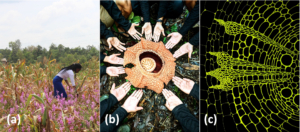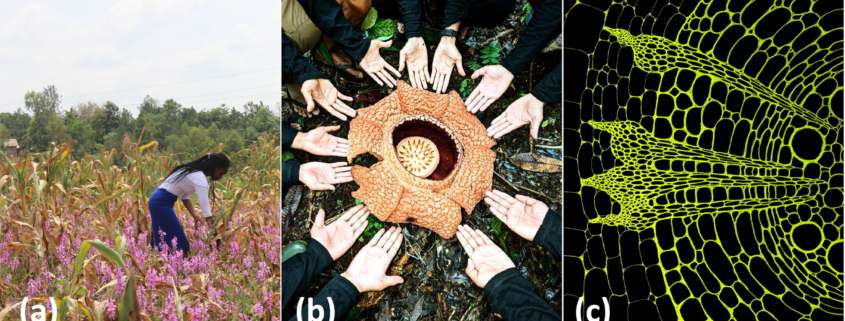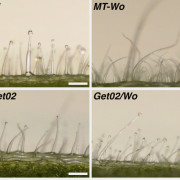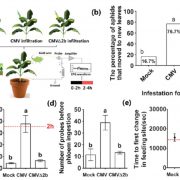Special issue: Parasitic plants
Special issue: Parasitic plants
 Runo, Wicke, and Thorogood have edited a special issue of Plants, People, Planet on the topic of parasitic plants. (Note – the Special Issue will be launched on February 19, but the articles are already online in Early View). It’s nice to see a collection of articles that focus on a phylogenetically diverse collection of plants that share an unusual life trait, the ability (or requirement) to parasitize other plants. The collection highlights three major points. First, a few parasitic plants are major threats to food security; these include witchweeds (e.g., Striga spp) and broomrapes (e.g., Orobanche spp), so understanding their biology is of practical importance. Second, a few are endoparasites that live nearly their full life inside of other plants, and some of these are endangered, including Rafflesia spp. that produce the world’s largest flowers. Finally, there are fascinating comparative studies that can be made amongst these very special plants. Key questions include how the cross-species communication that allows parasitic seeds detect a suitable host, triggering germination; how some hosts are resistant and others susceptible; and how the parasite pushes into the host tissues and evades its defenses. There’s a lot of fascinating biology in this issue and much of it is inherently interesting due to the strange nature of parasitic plants. Check the website after the official launch on February 19 for the cover reveal! (Summary by Mary Williams @PlantTeaching.bksy.social @PlantTeaching) Plants, People, Planet https://doi.org/10.1002/ppp3.10616
Runo, Wicke, and Thorogood have edited a special issue of Plants, People, Planet on the topic of parasitic plants. (Note – the Special Issue will be launched on February 19, but the articles are already online in Early View). It’s nice to see a collection of articles that focus on a phylogenetically diverse collection of plants that share an unusual life trait, the ability (or requirement) to parasitize other plants. The collection highlights three major points. First, a few parasitic plants are major threats to food security; these include witchweeds (e.g., Striga spp) and broomrapes (e.g., Orobanche spp), so understanding their biology is of practical importance. Second, a few are endoparasites that live nearly their full life inside of other plants, and some of these are endangered, including Rafflesia spp. that produce the world’s largest flowers. Finally, there are fascinating comparative studies that can be made amongst these very special plants. Key questions include how the cross-species communication that allows parasitic seeds detect a suitable host, triggering germination; how some hosts are resistant and others susceptible; and how the parasite pushes into the host tissues and evades its defenses. There’s a lot of fascinating biology in this issue and much of it is inherently interesting due to the strange nature of parasitic plants. Check the website after the official launch on February 19 for the cover reveal! (Summary by Mary Williams @PlantTeaching.bksy.social @PlantTeaching) Plants, People, Planet https://doi.org/10.1002/ppp3.10616










